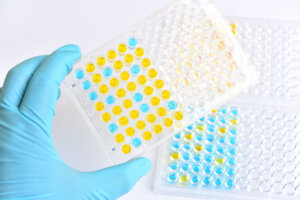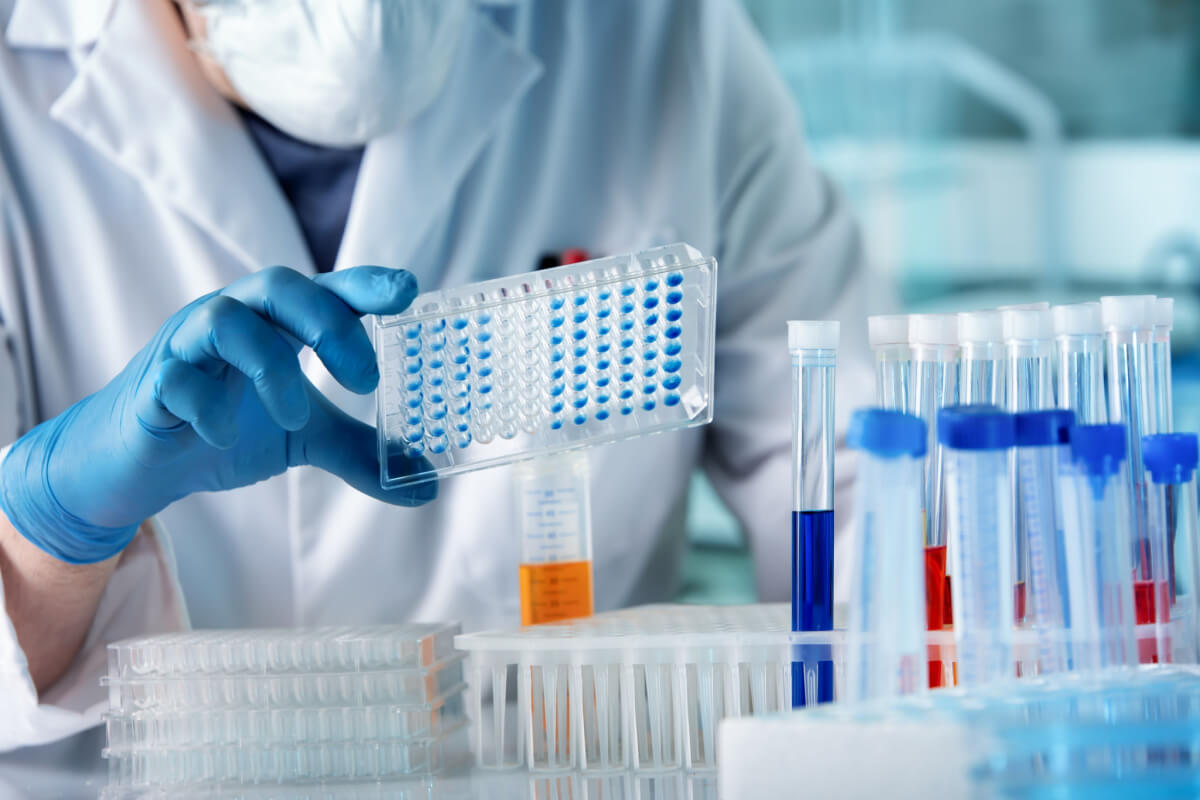The ELISA Blood Test: What It's For and How It's Done

The enzyme-linked immunosorbent assay, more commonly known as the ELISA blood test, is the gold standard in immunoassays. It’s the most sensitive immunological test available today, with multiple uses and applications in medicine.
Today, we’ll tell you about the characteristics of the ELISA blood test with an emphasis on when it’s necessary.
What is the ELISA blood test?
ELISA is a blood test used to detect antibodies, antigens, and proteins in biological samples. As experts rightly point out, it replaced other methods because of the ease with which it can be applied and its relatively low cost. Today, it’s the gold standard worldwide for immunological assays.
The ELISA blood test has a high specificity, so it’s used to support the diagnosis of an underlying disease. According to specialists, the test is based on antigen-antibody reactions. These represent the chemical interaction between antibodies generated by leukocyte B cells and antigens.

How is the ELISA blood test performed?
The first step in performing an ELISA test is to draw blood in the conventional manner. A health care professional will disinfect the inside of the elbow, apply a tourniquet, and draw a small sample of blood for testing in a laboratory.
Once in the laboratory, the practitioner will add the sample to a polystyrene plate. According to the specific type of test, a primary or secondary detection antibody, antigen, coating antibody, buffer, wash, and substrate will be added.
In this regard, if the blood sample contains antibodies against the antigen, they’ll eventually bind. The four general steps in carrying out an ELISA blood test consist of coating (antigen or antibody), protein capture, detection, and the final reading. For these last two steps, a multimode microplate reader can be used. Several types of tests exist:
- Direct ELISA
- Indirect ELISA
- Sandwich ELISA
- Competitive ELISA
The use of one type as opposed to another depends on the reasons for which the processing is performed. At the same time, the speed with which test results are available depends on many variables. The urgency of the results, the laboratory’s workload and the exact disease to be detected. It may take days or weeks to get an answer.
When is an ELISA blood test necessary?
Beyond the technical aspects of the ELISA blood test, the important thing to understand is its practical application. As already mentioned, the enzyme-linked immunosorbent assay is used to detect antibodies associated with certain diseases. Among many other things, today ELISA is performed for the following:
- HIV
- Syphilis
- Varicella zoster virus
- Molluscum contagiosum virus
- Rotavirus
- Pernicious anemia
- Lyme disease
- Zika virus
- Toxoplasmosis
- Squamous cell carcinoma
- Rocky Mountain spotted fever
- Hepatitis (A, B and C)
But that’s not all. The ELISA test can also be used to estimate levels of prostate-specific antigen, testosterone, luteinizing hormone, prolactin, follicle-stimulating hormone, and human chorionic gonadotropin. Because of the latter, it can be an adjunct to pregnancy testing.
Similarly, it can be used to assess outbreaks of cholera and influenza. In addition, it’s also emerging as a great ally in drug screening tests. It’s often used occasionally for amphetamine, methamphetamine, and cocaine use.
Other uses of the enzyme-linked immunosorbent assay include detecting food allergens and fungal infections, and also for determining blood type. Unsurprisingly, it’s also widely used in clinical and laboratory research. For example, in the manufacture of new drugs.

A screening test
The ELISA test has established itself as a breakthrough in medicine over the past few decades. Despite this, it’s considered more of a screening rather than a diagnostic test. Therefore, most of the time, complementary evaluations will be required to confirm the test findings.
For this reason, the results obtained from the blood test should be interpreted by a professional. In doing so, they’ll most likely order additional tests. They may even order a repeat test if the test is negative and suspicions are very high.
Reliable test results require the close collaboration of laboratory technicians, physicians, nurses, and other professionals for collection, performance, interpretation, and diagnosis. Assays continue to be refined over the years, and new scenarios emerge where they can be used to support a final diagnosis.
All cited sources were thoroughly reviewed by our team to ensure their quality, reliability, currency, and validity. The bibliography of this article was considered reliable and of academic or scientific accuracy.
- Alhajj M, Farhana A. Ensayo inmunoabsorbente ligado a enzimas. En: StatPearls [Internet]. Treasure Island (FL): Publicación de StatPearls; 2022.
- The enzyme-linked immunosorbent assay (ELISA). Bull World Health Organ. 1976;54(2):129-39.
- Sakamoto S, Putalun W, Vimolmangkang S, Phoolcharoen W, Shoyama Y, Tanaka H, Morimoto S. Enzyme-linked immunosorbent assay for the quantitative/qualitative analysis of plant secondary metabolites. J Nat Med. 2018 Jan;72(1):32-42.
This text is provided for informational purposes only and does not replace consultation with a professional. If in doubt, consult your specialist.








